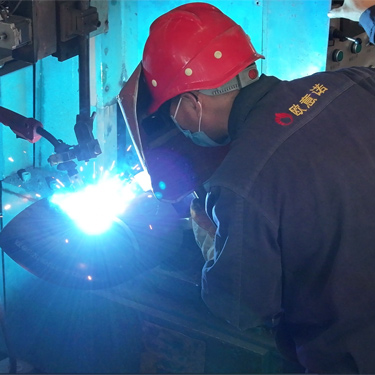
7 月 . 29, 2024 23:43
Back to list
Understanding the Functionality and Applications of Pressure Reducing Valves in Various Systems
Understanding Pressure Reducing Valves Functionality and Importance
Pressure reducing valves (PRVs) are essential components in various systems where the regulation of pressure is critical. Their primary function is to maintain a specific downstream pressure despite fluctuations in upstream pressure. This capability is particularly crucial in applications where the safety and efficiency of processes depend on stable pressure levels.
How Pressure Reducing Valves Work
At the heart of a pressure reducing valve is a mechanism that modulates the flow of fluid based on the pressure differential between the inlet and outlet. When the upstream pressure exceeds a predetermined set point, the valve will automatically adjust to allow more flow, thereby reducing the pressure downstream. Conversely, if the downstream pressure falls below the set point, the valve will constrict flow to maintain the desired pressure level.
Most PRVs utilize a spring-loaded diaphragm mechanism. The valve's design typically includes an adjustable spring that sets the desired outlet pressure. As pressure changes, the diaphragm moves in response, opening or closing the valve to maintain the set pressure. This feedback loop ensures that the system operates within safe limits, protecting equipment and processes from the risks associated with over-pressurization.
Applications of Pressure Reducing Valves
Pressure reducing valves are found in various industries, including water distribution, oil and gas, HVAC systems, and manufacturing. In municipal water systems, for instance, PRVs are critical in reducing the high pressure from water mains to a safe level for residential and commercial use. This not only protects plumbing fixtures but also conserves water by preventing leaks and excessive flow.
In the industrial sector, PRVs ensure that machinery operates efficiently by maintaining consistent pressure levels. For example, in a steam system, a PRV can control the pressure of steam entering equipment, which is vital for process reliability and equipment longevity. Similarly, in oil and gas operations, PRVs help manage pressure during extraction and transportation, thereby protecting pipelines and processing equipment from burst failures.
pressure reducing valve

Benefits of Using Pressure Reducing Valves
The main advantages of employing PRVs include improved safety, enhanced efficiency, and reduced operational costs. By maintaining appropriate pressure levels, these valves minimize the risk of leaks and equipment failures, which can lead to costly downtimes and repairs. Additionally, PRVs can contribute to energy savings by reducing the energy required to pump fluids at higher pressures.
Moreover, PRVs help in conserving resources. For instance, in irrigation systems, maintaining optimal pressure can significantly reduce water wastage, ensuring that crops receive the required hydration without unnecessary loss.
Maintenance and Troubleshooting
While pressure reducing valves are designed to require minimal maintenance, regular checks are essential to ensure their proper functioning. Common issues include leaks, which can occur at the valve seat or due to diaphragm damage. Additionally, if the outlet pressure is not stable, it may indicate a malfunction or wear in internal components, necessitating inspection or replacement.
For optimal performance, it's crucial to select the right PRV based on the specific application and conditions. Factors such as flow rates, pressure settings, and the media being controlled should all be considered during the selection process.
Conclusion
Pressure reducing valves play a vital role in ensuring the safe and efficient operation of various systems across multiple industries. By regulating downstream pressure, they protect equipment, enhance process efficiency, and contribute to sustainable practices. Understanding their functionality and applications is crucial for anyone involved in system design, maintenance, or operation, as these components are pivotal in achieving optimal pressure management.
Latest news
-
Unlocking The Quality Gas Pressure ReducersNewsNov.01,2024
-
The Role of Gas Pressure Reducing StationsNewsNov.01,2024
-
The Importance and Functionality of Safety Relief ValvesNewsNov.01,2024
-
The Essential Role of Safety Valves in Natural Gas ApplicationsNewsNov.01,2024
-
The Essential Role of Gas Pressure RegulatorsNewsNov.01,2024
-
Enhance Your Premium Gas FiltersNewsNov.01,2024

